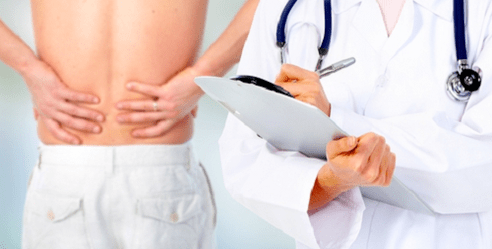Sudden onset, acute, painful or dull, radiating to the legs, pain in the lower back, the cause of which cannot always be determined immediately, may indicate the development of various diseases. Only an experienced doctor will be able to understand what exactly causes the pain syndrome, after reviewing the clinical picture, patient complaints, as well as the results of studies and analysis of ultrasound, X-ray or MRI. But often, even before going to the doctor, a person wants to know in advance what is related to his condition.

The main cause of low back pain
First of all, all causes of back pain can be divided into two main types:
- Primary (pain is precisely associated with pathology of the spine, intervertebral discs, muscle tissue or joints).
- Secondary (pain occurs with pathology of internal organs and is given to the lower back, as well as due to infectious diseases in the body, tumor development).
The leading cause of back pain
Today, bipedalism is called the cause of all spinal diseases. The load on the spine increases strongly with an upright position of the body, especially in the lower part - the lumbar, which wears out faster.
The main causes of back pain are as follows:
- Osteochondrosis of the lumbar spine. Degenerative changes in the spine cause acute pain, inflammation, swelling in the affected area, difficulty in movement. Characteristic changes in the cartilaginous tissue of the vertebral disc and the vertebral body itself often cause pinching of the nerve, which is indicated by acute pain.
- Spondyloarthrosis. This pathology affects the articular tissue in the area of the spinal column. In addition to pain in the joints, a person with spondyloarthrosis may experience severe stiffness of movement when it is impossible to straighten or twist.
Low back pain caused by osteochondrosis or spondyloarthrosis requires immediate medical attention and, of course, immediate treatment.
Secondary low back pain
A large number of diseases that are not associated with pathological processes in the spine can trigger unpleasant pain in the back.
There are secondary causes of lower back pain such as:
- curvature of the spinal column (scoliosis, lordosis, etc. );
- infections of various origins affecting the intervertebral disc (tuberculosis, etc. );
- urinary tract infections and the consequences of influenza;
- inflammatory processes in the genital area;
- gastrointestinal diseases (appendicitis, pancreatitis, cholecystitis, intestinal colic);
- kidney disease;
- local oncological diseases of the peri-lumbar region;
- overweight;
- osteoporosis, acute rheumatism, chronic arthritis;
- prolonged standing or sitting;
- muscle cramp;
- nervous tension, stress.
Diseases of the internal organs have their own obvious symptoms, reflected only in the lower back.
Low back pain causes both women and men
Female body structure is prone to the appearance of heaviness and pain in the lumbar region. This is due to a hormonal background: the menstrual cycle, menopause and pregnancy affect the lumbar region, because the reproductive organs are located in nearby areas. Gynecological diseases (inflammation of the appendix and uterus) cause radiating lower back pain in women.
Similarly, in men, prostatitis and inflammation of the epididymis cause pain. It happens that men periodically experience back pain during continuous work in the cold in the draft, or if the work is associated with weight lifting. The cause of such back pain requires preventive measures: you need to warm your back and wear a special corset.
Muscle clamps
Separately, I like to think of moments like muscle cramps, which are often the cause of lower back pain. Lack of constant physical activity leads to the fact that the back muscles are weak and unable to withstand prolonged or increased loads. Therefore, working on the legs or in an immobile sitting position causes back muscle tension and pain.
Stress has a similar effect when muscle tension arises as a result of emotions of fear or anger. This is followed by cramps and pain, if not eliminated in time.
Simultaneous symptoms
Lower back pain, the cause of which lies in a lesion of the spine, is most often accompanied by the following symptoms:
- discomfort can cover not only the back, but also move to the buttocks and lower limbs;
- movement can be very difficult or completely impossible;
- the affected area is usually inflamed and swollen.
For any of these symptoms, you should seek medical help from a neurologist. If there are other accompanying symptoms, then it is best to contact a therapist who will determine the cause of the back pain and then refer you to a specialist or prescribe treatment.












































